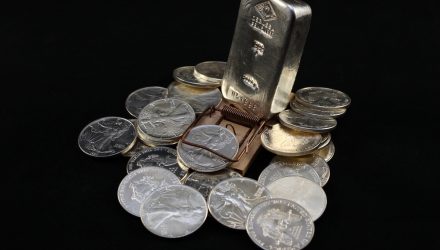Investment demand for silver and related exchange traded funds has helped offset the damage from the coronavirus pandemic in the industrials and jewelry segments.
The Aberdeen Standard Physical Silver Shares ETF (SIVR) has increased 15.0% over the past month, but it remains down 2.9% year-to-date.
Steve Dunn, Head of Exchange Traded Funds, Aberdeen Standard Investments, pointed out that a large 50% of silver demand comes out of industry and technology sectors, followed by 25% by jewelry. The rest is driven by investments in physical silver or related ETFs.
“75% of the global silver demand is dependent on the consumer who has been either temporarily and permanently wounded by the downturn. The primary driver for silver demand year to date has been investment related as we have seen by the flows into silver ETFs,” Dunn told ETF Trends in an email.
Dunn even argued that unlike gold, silver may even get a boost as major economies ease coronavirus-linked restrictions, which will only fuel hopes of a recovery of demand.
However, things are turning for the better for silver.
“Last week, silver ETFs added 33 million ounces which would be its best week since July 2019. The investment demand for physical silver continues to be strong. Governments and central banks continue to inject liquidity into the financial markets to offset the negative economic impact of COVID-19. With nominal rates near zero and expected to remain low, the environment for silver is attractive,” Dunn added.
Silver maintains a high correlation to gold and holds some defensive characteristics that are valued during economic uncertainty, notably its ability to safeguard wealth in times of rising inflationary pressures in light of loose monetary policies. The Federal Reserve has promised trillions of dollars in support of the U.S. economy, Japan approved a fresh $1.1 trillion stimulus package, and the European Union unveiled one of 750 billion euros.
Looking ahead, Dunn believed that the Gold/Silver Ratio provides a simple way to check which of the two major precious metals is gaining value relative to the other. When the Gold/Silver Ratio rises, it means that gold has become more expensive compared to silver, and the cheaper metal might offer better value. On the other hand, when the ratio falls, gold has become less costly relative to silver. The ratio ended 2019 at 83.9, but by March, it climbed to 125.5, suggesting extreme value in silver. To put this in perspective, the historical average is in the mid-50s.
For more information on the precious metals market, visit our precious metals category.
